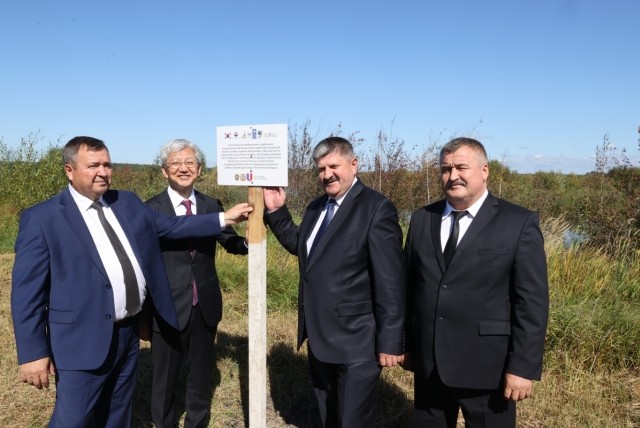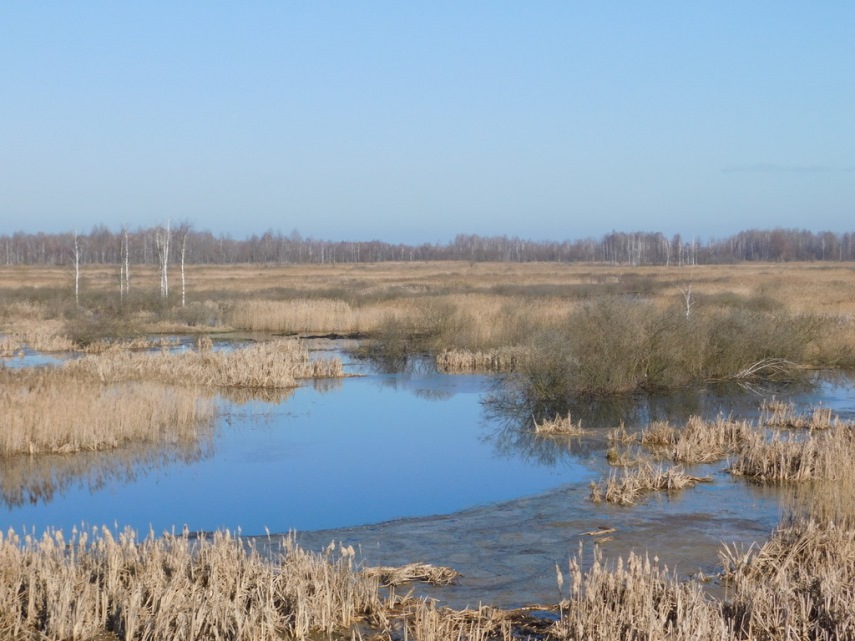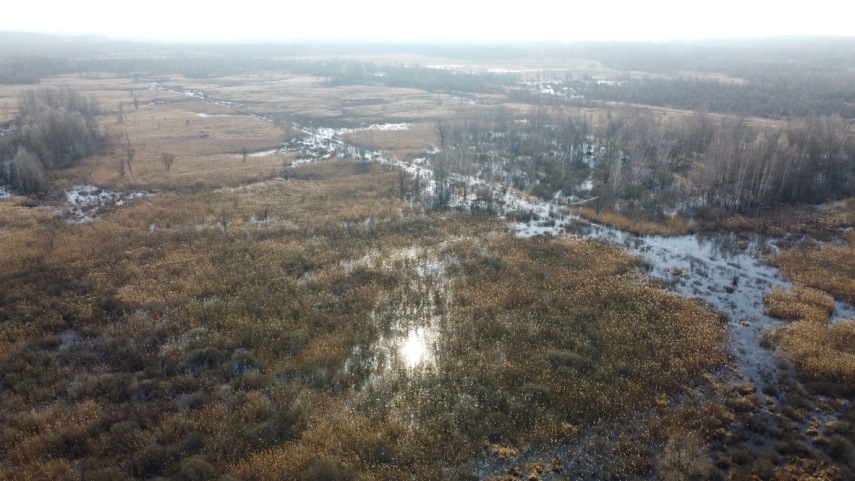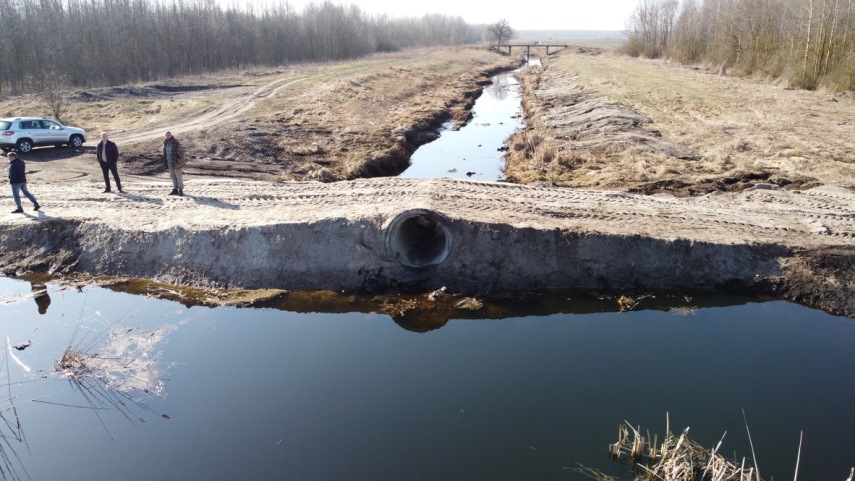Land of forests and peatlands. Belarus is among the world leaders in restoring drained peatlands.
News
01.10.2021 | 17:27
The results of the large-scale rehabilitation of peatlands in Gomel region of Belarus have been assessed by the Minister of Natural Resources and Environmental Protection Andrei Khudyk, Ambassador Extraordinary and Plenipotentiary of the Republic of Korea to the Republic of Belarus Tae Jun Youl and representatives of various relevant agencies and organizations.
The Minister of Natural Resources and Environmental Protection of the Republic of Belarus Mr. Andrei Khudyk drew attention to the fact that climate issues are at the forefront of the world agenda today. According to the Minister, the project to restore drained peatlands has many advantages and solves a huge number of tasks. "Due to the shift of climatic zones, climate change in the world, the Gomel region, like the whole of Belarus, experiences a huge lack of productive moisture in the soil for the formation of crops. Biodiversity is changing. The time has come to restore our ecosystems, at least to re-water the exhausted peatlands" stated Andrei Khudyk.
The significance of the project for the entire Gomel Region was emphasized by the Chairman of the Regional Executive Committee Gennady Solovey. He stated that with climate change in the region, various negative phenomena began to be observed more and more often: "For example, in July this year in Mozyr, Zhlobin, Gomel districts, we felt soil droughts. In Rechitsa, we faced sandstorms. Thanks to the project, the biosphere system of the Turia River will be restored, the fire hazard in this area will decrease, and in general it will be possible to preserve natural resources for future generations”.
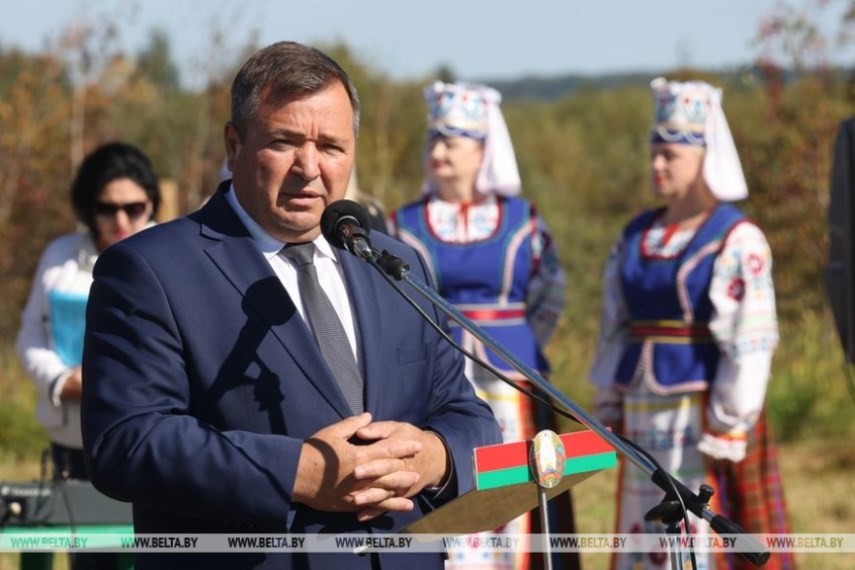
Ambassador Extraordinary and Plenipotentiary of the Republic of Korea to Belarus Tae Jun Youl noted that desertification and land degradation are part of the challenges facing the world today. According to the Ambassador, all of humanity can overcome these challenges. "In this context, the current project of cooperation between our countries and UN is of great importance. It demonstrates our desire for joint efforts," the diplomat said.
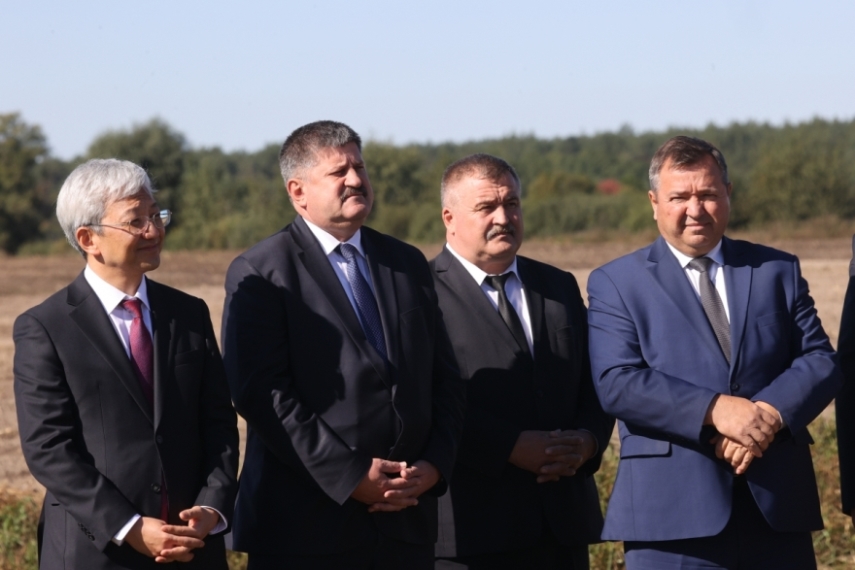
Work on the restoration of peatlands in these areas was carried out within the framework of the international technical assistance project “Restoration of Drained Peatlands in Belarus”. The project has been implemented since 2018 by Public Association “Green Economy” in partnership with the Ministry of Natural Resources and Environmental Protection of the Republic of Belarus and Gomel Regional Executive Committee. It is a part of the activities of the Greening Drylands Partnership of the Changwon Initiative, funded by the Korea Forestry Service. The work is carried out in accordance with the agreement with the UNCCD Secretariat.
More than 3,000 hectares of degraded and inefficiently drained peatlands have been restored as a result of the second phase of the project this year, with more than a thousand hectares of peatland restored in 2019 during the first phase of the project.
Ecological rehabilitation of peatlands
Restored peatlands are originally the areas of former peat extraction with many field drains. As experts say, these places are very difficult to reach, so no humans have literally set foot here for decades.
During the project this year, a dam was built in previously drained areas and 120 cofferdams were constructed using special technology to retain water.
Furthermore, in the framework of the project, an innovative automatic forest fire monitoring and early detection system "Forest Guardian" was purchased and installed in the project area. It consists of high-precision surveillance cameras and artificial Intelligence-based software. Mobile cameras are mounted on towers and revolve around their axis, capable of pinpointing fires up to 35 kilometres away. And infra-red sensors can even detect the temperature of a fire.
Peatlands restoration contributes to addressing global environmental challenges
Belarus is often referred to as the land of forests or lakes, but nature has generously endowed the country with peatlands (also known as marshes, swamps and bogs) as well. The total area of peatlands in Belarus is about 2.5 million ha. These areas were once considered to be mandatory for agricultural use. This policy led to extensive reclamation programmes and, together with industrial peat extraction, caused considerable damage to natural ecosystems - two thirds of these areas were drained. Nevertheless, there are more than 860,000 hectares of peatlands in their natural or near-natural state in Belarus. More than 64,000 hectares of disturbed peatland have already been rehabilitated through international technical assistance projects. Belarus is now one of the world's leaders in peatlands restoration, and work on ecological rehabilitation of peatlands continues.
Such a large-scale ecological rehabilitation of wetlands makes a major contribution to solving several global issues at once.
Disturbed peatlands are major sources of greenhouse gas emissions, with annual global CO2 emissions of 1.3 gigatons or 5.6% of global anthropogenic emissions. Therefore the conservation, restoration and sustainable use of wetland ecosystems is one of the keys to combating the consequences of climate change.
Targets for ecological rehabilitation of disturbed peatlands in Belarus are included in the UN Convention to Combat Desertification Land Degradation Neutrality targets by 2030 and in the Nationally Determined Contributions to address climate change under the Paris Agreement. Belarus has taken another important step towards implementing its commitments under the Paris Agreement by adopting the Law “On Protection and Use of Peatlands”. Dianna Kopansky, Global Peatlands Initiative Coordinator at the United Nations Environment Programme said “it is truly impressive to see the restoration action taken and commitments that Belarus has made for their incredibly important peatlands. Including peatlands in their NDC, LDN targets and adopting laws show that Belarus is ahead of the curve for climate action! I look forward to learning more about their experiences and to share these with countries and stakeholders embarking on peatlands protection and conservation at the upcoming UNFCCC COP 26 in Glasgow and beyond”.
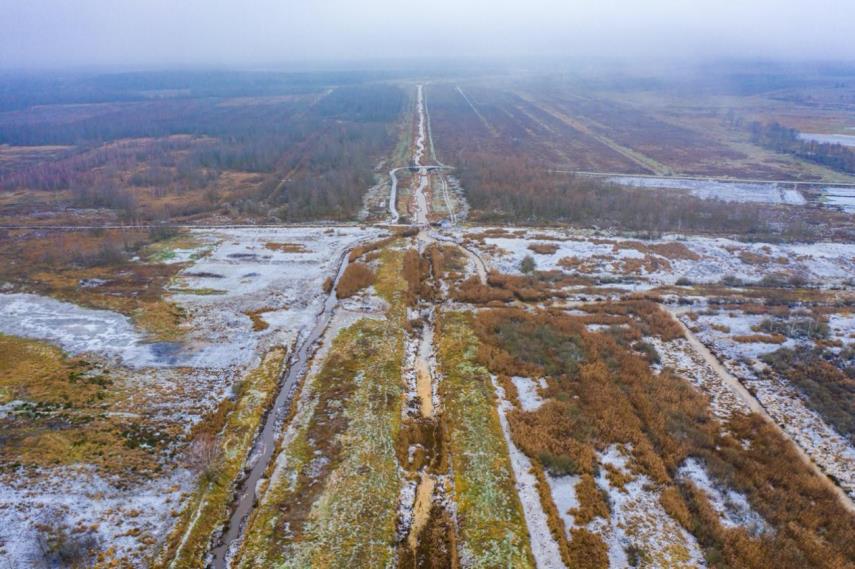
Belarus has set itself ambitious targets for the next decade. “We set ambitious plans and targets to achieve climate neutrality, strengthen adaptive capacity to the effects of climate change, prevent land degradation, widely introduce water-saving technologies, restore disturbed ecosystems, develop ecotourism,” stated Andrei Hudyk, the Minister of Natural Resources and Environmental Protection of the Republic of Belarus.
Belarus also welcomes such an important initiative as the Global Peatland Initiative and is ready to share its experience through this recognised international platform.
Environmental and socio-economic benefits of wetland restoration
The second phase of the project “Rehabilitation of Drained Peatlands in Belarus” is being implemented in Gomel region. This region was not chosen by chance. Almost a third of Gomel region was affected by the Chernobyl disaster. Burning of peatlands located in the radioactive zone poses a particular threat, as it increases the transfer of radionuclides to healthy land, further reducing the area suitable for agriculture and forestry. Peatland restoration will also help to prevent possible contamination of other areas caused by peat fires and the migration of radionuclides. Also in the region, as elsewhere in the country, drought and a drop in groundwater levels are reducing crop yields, drying out of forests and mass tree infestations by the bark beetle are observed. Large areas have therefore been subjected to emergency felling. In addition, areas of drained peatlands are at high risk of fires.
The restoration of disturbed bogs will help to stabilise the groundwater level in the surrounding areas, thereby reducing the problem of droughts and the accumulation of fresh water; ensuring sustainable water supply for rivers and lakes; preventing peat mineralisation and soil drying; reducing the risk of forest and peat fires; also increasing the number of rare flora and fauna species and the recovery of biological resources, such as cranberry; creating conditions for developing ecological tourism focused on the recreational potential of wetlands.
Figures and facts
Belarusian peatlands are home to over 40% of bird species, 35% of insect species, over 15% of wild plant species listed in the Red Book of the Republic of Belarus. For some endangered species, Belarusian wetlands are critical for their global survival.
Belarusian peatlands generate a number of ecosystem benefits:
• conserving more than 7 billion cubic metres of fresh water;
• ensuring sustainable water supply to rivers and lakes;
• storing about 500 million tonnes of carbon in wetlands;
• ensuring the annual removal of about 900,000 tonnes of carbon dioxide from the atmosphere;
• ensuring the reproduction of biological resources, e.g. cranberries - more than 10,000 tonnes per year;
• developing eco-tourism that focuses on the recreational potential of peatlands.
© Ministry of natural resources and environmental protection of the Republic of Belarus, 2025



